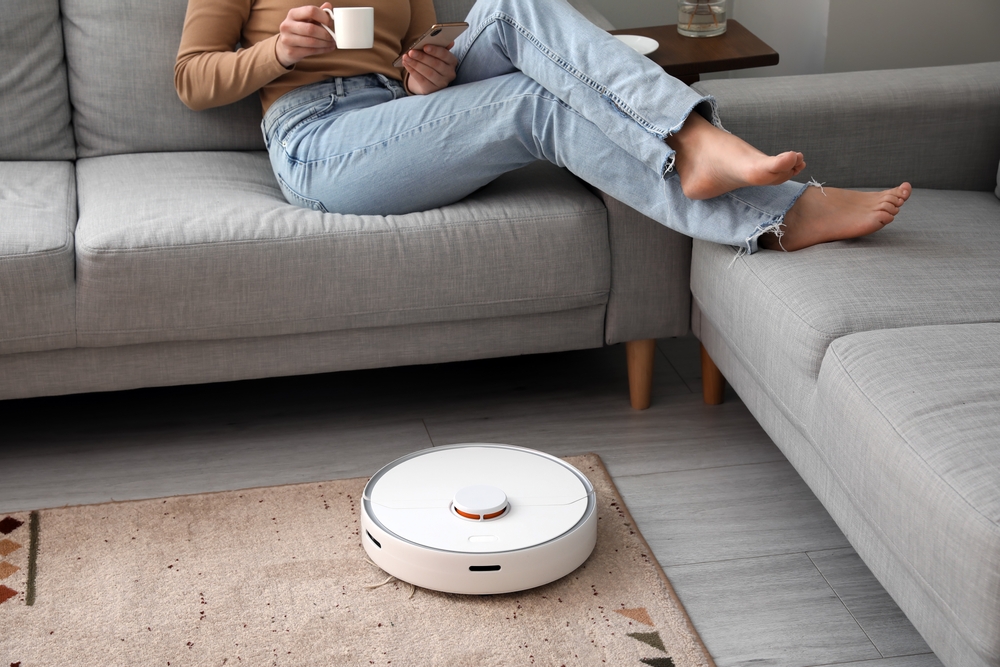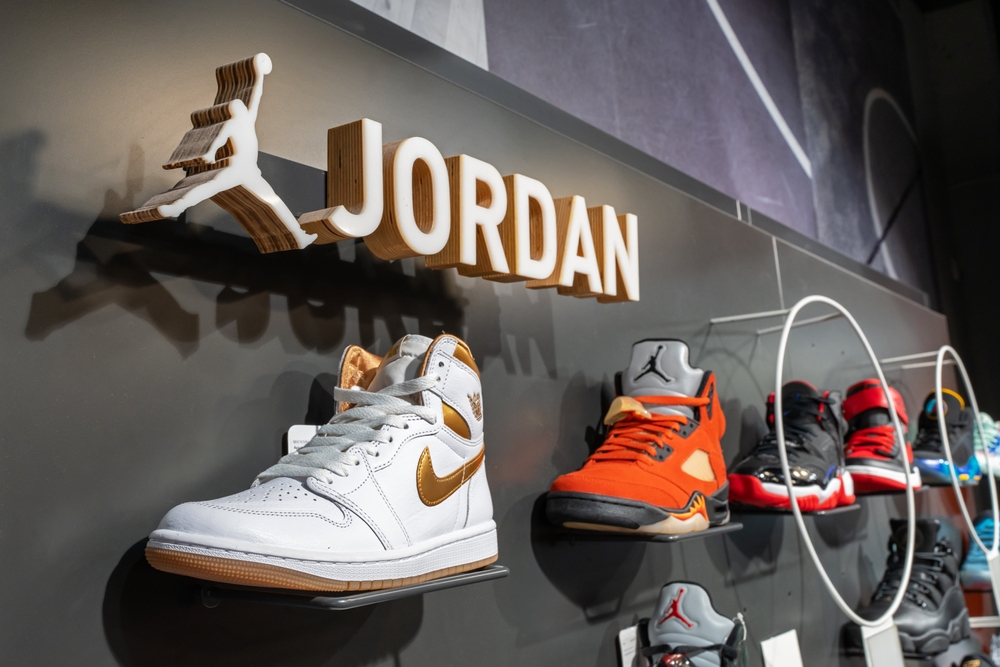Many of us often find ourselves justifying purchases that, in hindsight, were less than wise. Whether it’s the allure of a shiny new gadget or the siren call of a designer label, we’ve all been there, caught in the web of our own rationalizations. These justifications are more than just fleeting thoughts; they’re deeply ingrained habits that speak volumes about our relationship with money and material possessions.
1. “It Was On Sale, So I Had to Buy It”

The thrill of a sale can be utterly intoxicating, creating the illusion that you’ve stumbled upon a rare treasure. You convince yourself that buying an item at a reduced price is a financial victory, even if it wasn’t on your shopping list. This justification plays into the scarcity mindset, where the fear of missing out trumps rational decision-making. Yet, what you often end up with is a closet full of clothes that never see the light of day.
According to a study published in the Journal of Consumer Research, people are more likely to purchase items on sale even if they never intended to buy them initially. The psychological satisfaction of securing a deal can often overshadow practicality and utility. Recognizing this impulse can help you evaluate the true necessity of a sale item before adding it to your shopping cart. In doing so, you cultivate a more mindful approach to shopping, rooted in need rather than impulse.
2. “I’ll Use It Every Day”

It’s easy to fall into the trap of envisioning a product seamlessly integrating into your daily life. You picture yourself using that high-powered blender every morning or wearing those expensive sneakers on daily jogs. This fantasy often overshadows the reality of your habits, leading you to buy something that ends up collecting dust. The allure of a potential new lifestyle can be blinding, convincing you that this purchase is an investment in a better you.
Before making the leap, consider your current routines and how a new item would realistically fit into them. Are you really going to make smoothies every day, or is it just a passing phase? Awareness of your habits can be a powerful tool against this justification. By doing so, you make purchases that genuinely enhance your life rather than complicate it.
3. “It’s an Investment”

Labeling a purchase as an “investment” can make it sound like a financially savvy decision rather than an indulgence. You argue that a high-quality handbag or an expensive watch will last a lifetime, justifying the upfront cost. While quality items can be worth their weight in gold, this rationale often overlooks the reality of changing trends and personal preferences. An investment implies growth in value, which isn’t always the case with consumer goods.
Professor Juliet Schor, an expert on consumer culture, notes that people often mistake the potential longevity of products for financial gain. The emotional satisfaction derived from owning something luxurious can cloud your judgment. Before calling it an investment, consider if it will truly appreciate over time or if it’s just a temporary desire. This awareness can help you differentiate between a genuine investment and a fleeting fancy.
4. “I Deserve It”

After a long week or a tough day, the notion of treating yourself can feel like a well-earned reward. You tell yourself that you deserve that extravagant purchase because of your hard work, turning a luxury into a necessity in your mind. This mindset taps into a culture of self-reward, where the line between want and need becomes blurred. While self-care is important, conflating it with consumerism can lead to regret.
Reflect on what truly constitutes a reward for you. Is it the brief joy of acquiring a new item, or could it be an experience or time spent on a hobby? By distinguishing between lasting fulfillment and momentary pleasure, you’re better equipped to make purchases that genuinely reward your efforts. This awareness fosters a healthier relationship with spending and self-indulgence.
5. “Everyone Else Has One”

Keeping up with the Joneses is an age-old justification that never seems to lose its grip. When everyone around you seems to have the latest gadget or fashion item, it creates a sense of urgency to fit in. This social pressure can be persuasive, making you believe that purchasing the same thing is essential to your social standing. However, this mentality often leads to purchases that don’t align with your personal values or needs.
Research from the Stanford Graduate School of Business highlights how social influence significantly affects buying behavior, often leading to overconsumption. The key is to distinguish between what you genuinely desire and what you feel pressured to buy. By focusing on your personal preferences, you can resist the urge to conform to external expectations. This not only leads to more satisfying purchases but also reinforces your individuality.
6. “It’ll Make My Life Easier”

The promise of convenience is a compelling reason to open your wallet. Whether it’s the latest kitchen gadget or a smart home device, you’re sold on the idea that this product will simplify your life. Yet, the reality often falls short, as new tools can add complexity rather than reduce it. The quest for ease can become a slippery slope, where more gadgets mean more maintenance and less simplicity.
Before buying, evaluate the real impact this item will have on your life. Is it solving a problem, or is it adding another layer to manage? By dissecting the true value of convenience items, you can make choices aligned with genuine simplification. This clarity helps you maintain control over your environment, rather than letting it control you.
7. “It’s Limited Edition”

The allure of a limited-edition product is hard to resist, playing on the psychology of scarcity and exclusivity. You convince yourself it’s a unique opportunity that you can’t let pass by, fueling a sense of urgency. This rationale often results in purchases driven by fear of missing out rather than genuine need or desire. The promise of rarity can cloud judgment, leading you to value exclusivity over practicality.
Professor Ravi Dhar from Yale School of Management explains that scarcity can make products appear more desirable, often leading to impulsive buying decisions. The key is to pause and evaluate whether the limited nature of the item truly warrants its purchase. By being mindful of this tactic, you can resist the pressure and focus on items that bring lasting satisfaction. This approach not only curbs impulsive spending but also strengthens your resolve against marketing ploys.
8. “I Can Always Return It”

The safety net of a return policy can make shopping feel risk-free. You reassure yourself that if the purchase doesn’t work out, you can simply take it back. This mindset can lead to frivolous buying decisions since the perceived consequences are minimal. However, the hassle of returns often leaves items forgotten in a drawer, adding to clutter rather than contributing to satisfaction.
Instead of relying on the option to return, consider whether you’d keep the item if returns weren’t available. This shift in perspective encourages more deliberate decision-making, prioritizing necessity and satisfaction over convenience. By fully committing to each purchase, you reduce the likelihood of buyer’s remorse and make your spending more intentional. This not only benefits your wallet but also cultivates a more thoughtful consumer habit.
9. “It’ll Inspire Me”

Some purchases are justified under the guise of inspiration, whether it’s a new set of paints or a stylish workout outfit. You tell yourself that owning this item will jumpstart your creativity or motivation, making the cost worthwhile. However, the mere presence of new gear rarely transforms aspirations into actions. Often, the initial excitement fades, leaving you with unused items that serve as reminders of unmet goals.
Consider what truly motivates you before attributing that power to a purchase. Is it the act of creating or exercising itself, rather than the tools or attire you use? By focusing on intrinsic motivation, you can channel your energy into actions over acquisitions. This realization shifts the focus from external motivators to internal drive, promoting a more authentic pursuit of your goals.
10. “It’s Good for the Environment”

Eco-friendly products can easily justify their place in your shopping cart with promises of sustainability. You convince yourself that buying these items contributes positively to the planet, an investment in the future. However, the greenwashing phenomenon often overstates the environmental benefits of consumer goods. This can lead to complacency, where purchasing becomes a substitute for meaningful environmental action.
Before buying, research the actual impact and benefits of the product. Does it genuinely help the environment, or is it merely marketed that way? By critically evaluating these claims, you can make choices that align with your environmental values. This approach ensures that your spending reflects genuine sustainability rather than superficial solutions.
11. “It’ll Increase My Productivity”

In the quest for efficiency, productivity tools promise to revolutionize your workflow. Whether it’s a new planner or a high-tech gadget, you’re sold on the idea that it’ll streamline your tasks. However, these purchases often add complexity rather than simplify your processes. The focus on tools can distract from the real drivers of productivity, like discipline and focus.
Analyze whether the tool truly addresses a productivity gap or merely offers the illusion of efficiency. Sometimes, the simplest solutions are the most effective, demanding less time and energy to maintain. By identifying the root causes of inefficiency, you can make informed choices that genuinely enhance productivity. This discernment leads to a more streamlined work process and a clearer path to achieving your goals.
12. “It’ll Make Me Happy”

The promise of happiness is a powerful motivator, leading many to equate purchases with emotional well-being. You tell yourself that owning a particular item will bring joy, even if temporarily. However, the satisfaction of new acquisitions often wanes quickly, leaving you chasing the next hit of retail therapy. This cycle can lead to clutter and unfulfilled expectations, as material possessions rarely offer lasting contentment.
Reflect on what truly brings you happiness and fulfillment. Is it experiences, relationships, or achievements rather than objects? By grounding your pursuit of happiness in non-material sources, you can resist the urge to equate spending with satisfaction. This realization fosters a more balanced approach to consumption, focusing on what truly enriches your life.
13. “I’ll Regret It If I Don’t Buy It”

FOMO, or the fear of missing out, can be a persuasive justification for impulsive purchases. You convince yourself that passing up an opportunity will lead to regret, pressing you to act quickly. This mindset often clouds judgment, prioritizing short-term satisfaction over long-term consequences. Yet, more often than not, the anticipated regret is unfounded, and the purchase becomes just another forgotten trinket.
Before buying, assess whether the potential regret is based on genuine desire or societal pressure. Sometimes, the best decisions stem from patience and reflection rather than instant gratification. By tuning into your true needs and desires, you can make choices rooted in authenticity. This discernment empowers you to overcome FOMO and make purchases that truly resonate with your values.
14. “It’s a Once-in-a-Lifetime Opportunity”

The allure of exclusivity can turn a mundane purchase into something extraordinary in your mind. You tell yourself that this is a unique chance, never to come again, prompting immediate action. However, this scarcity mindset often obscures the fact that similar opportunities frequently arise. The urgency created by this justification can lead you to prioritize perceived rarity over genuine interest or need.
Instead of succumbing to this pressure, evaluate the true uniqueness of the opportunity. Is it a marketing tactic, or does it genuinely align with your goals and values? By distinguishing between hype and reality, you can make choices that reflect your priorities rather than external pressures. This clarity ensures that your spending aligns with your long-term aspirations rather than fleeting impulses.
15. “I Can Afford It Now”

Financial stability can create a sense of freedom, leading to purchases justified by the simple fact that your budget allows them. You reassure yourself that because you can afford it, you should indulge. However, this mentality often overlooks the value of financial planning and future needs. While the purchase might be affordable now, it can detract from long-term financial goals.
Consider whether the immediate satisfaction outweighs potential future benefits. Is this purchase aligned with your financial priorities, or is it a momentary indulgence? By focusing on long-term objectives, you can make decisions that enhance your financial well-being. This perspective fosters a more intentional approach to spending, prioritizing lasting value over instant gratification.
This article is for informational purposes only and should not be construed as financial advice. Consult a financial professional before making investment or other financial decisions. The author and publisher make no warranties of any kind.








